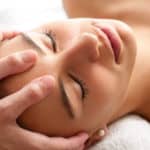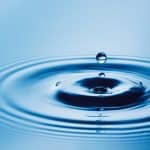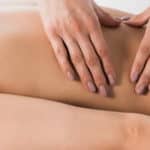 Want to earn continuing education credit for this article? Learn more.
Want to earn continuing education credit for this article? Learn more.
We’ve all had them – or most of us anyway – the headache that will not go away. It is estimated that 9 out of 10 people in the U.S. suffer from headaches at some point in their life. About 90 percent of these are blamed on stress-induced tension headaches. Migraines come in second, with about 12 percent of reported headaches, and there are approximately 200 other types of headaches that are experienced by various smaller percentages.
A person may not turn to massage therapy specifically to ease a headache, but he or she may seek to reduce stress, to relax and to simply feel at peace for an hour.
Modalities like Swedish massage, lymphatic drainage and other traditional western massage techniques are helpful and may reduce the overall occurrence of headaches, especially those caused by stress. But there is another way in which you can address a headache more directly – through the use of acupressure.
How Acupressure Works
Acupressure and acupuncture are still a bit of a mystery to most western educated healthcare professionals, but acupoints, meridians and Traditional Chinese Medicine (TCM) techniques have been used in Asia for thousands of years, with the first known written material produced around 200BC, though it is thought to have origins back to 2000BC.
While acupuncture uses fine needles to penetrate the skin at specific locations, acupressure is less invasive, using the therapist’s fingers, hands and feet to apply pressure to the client’s body on acupoints as well as along energy channels or meridians. The word shiatsu, a form of acupressure taught in many massage schools, translates into “finger pressure.”
The exact way acupressure works may be in part because it is a way of distracting the brain’s attention away from the pain. It may be that it does indeed clear out blocked energy patterns along the meridians. Some skeptics say it is simply a placebo effect. It matters less “how it works,” than that it simply works for many pain sufferers, period.
Acupoints for Headache Relief
The first step in determining the appropriate acupoints for a headache is to do a thorough intake with the client. The probable cause of a headache needs to be determined. This can be made easier if the client already has a diagnosis from a physician, but this does not mean the intake should be shortened. A massage therapist needs to inquire further regarding the client’s lifestyle, diet, exercise regimen and general overall health condition, including medications, in order to develop the most effective treatment session.
The most common acupoints used for headache pain are GB 20 and BL10, which are located just below the occiput within the posterior hairline. They are both just lateral to the spine, with BL 10 being approximately two finger widths away from the midline of the spine and GB 20 located between the trapezius and sternocleidomastoid muscles. In looking at a meridian chart with acupoints they will form a line of four horizontal points along the base of the skull where it is slightly soft to the touch.
Both GB20 and BL 10 help to expel wind and benefit the brain according to TCM. They also form a place where the massage therapist can “listen” to the body’s rhythms and pulses.
The most effective way to approach these acupoints is with the client in supine position. The therapist’s hands are in a slightly cupped position with the fingers placed just inside the client’s hairline. The weight of the client’s head against the fingers will usually provide just the right amount of pressure needed. Using tiny movements of the fingers along these points will enable the therapist and client to determine which points are more open and which are blocked. Just a slight movement can result in the diminishment or elimination of headache pain. At the point at which pain relief is felt, the practitioner should hold a steady light pressure for a minute or two. If upon release of pressure the headache pain returns, repeat.
Using these acupoints during a massage session is not limited to use in Asian bodyworking techniques. They can easily be accessed and incorporated during a traditional western massage as well.
Other helpful acupoints that can be easily utilized for addressing headache pain during almost any form are massage can be found on the feet. These would include KI-1 (located on the bottom of the foot, in the depression between the middle third and distal third of the sole) and can be combined with LIV-3 [located on the dorsum (top) of the foot, distal to the junction of the first and second metatarsals]. A good foot massage will access these and other points as well, including LIV-2 and ST-41 that have been found to be helpful for headache relief.
One point that can be easily used by the headache sufferer at any time is located in the soft web of the hand between the thumb and forefinger (LI-4). This acupoint is good for sinus headaches as well as frontal headaches. It helps to stop pain and calm the mind, so it is very useful in relieving anxiety. It should be noted, however, that it should NOT be used with anyone who is or might be pregnant as it promotes labor.
Headache pain can be mild or it can be debilitating. Acupressure therapy is just one more tool that can be added to the repertoire of a massage therapist to help clients defeat this all too common ailment.
Earn continuing education credit for this article contained in our Headaches, Facial Pain & Massage series. Click here to enroll.
Recommended Study:
Massage for Headaches & Neck Pain
Chronic Pain Management
Integrative Massage Collection
Shiatsu Anma Therapy
Stress Reduction Through Bodywork
More Information:
Headaches: Massage Benefits and Precautions
Benefits of Acupressure















